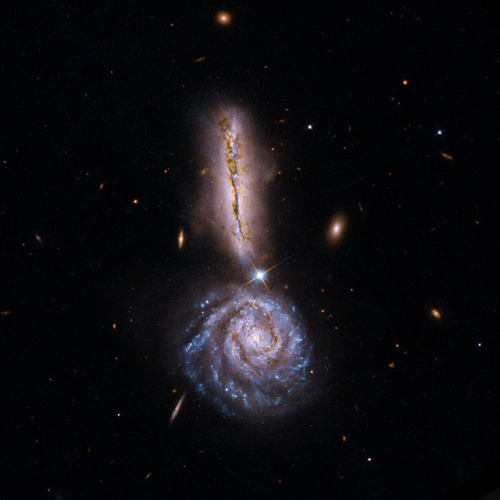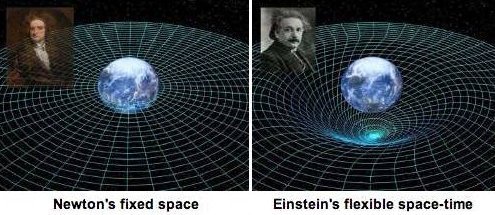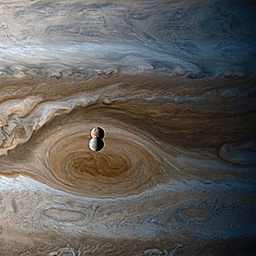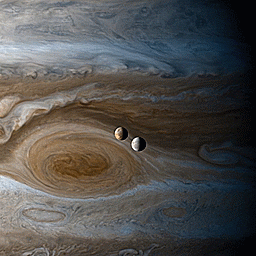This Is How Far Into The Earth Humans Have Dug So Far.
This is how far into the earth humans have dug so far.
More Posts from Riekod and Others



Neptune
It is named after the Roman god of the sea and has the astronomical symbol ♆, a stylised version of the god Neptune’s trident.

VV 340, pair of interacting galaxies in Boötes. The two galaxies shown here are in the early stage of an interaction that will eventually lead to them merging in millions of years.
Credit: NASA/STScI/NRAO/A.Evans et al

What are Gravitational Waves?
Today, the National Science Foundation (NSF) announced the detection of gravitational waves by the Laser Interferometer Gravitational-Wave Observatory (LIGO), a pair of ground-based observatories. But…what are gravitational waves? Let us explain:

Gravitational waves are disturbances in space-time, the very fabric of the universe, that travel at the speed of light. The waves are emitted by any mass that is changing speed or direction. The simplest example is a binary system, where a pair of stars or compact objects (like black holes) orbit their common center of mass.

We can think of gravitational effects as curvatures in space-time. Earth’s gravity is constant and produces a static curve in space-time. A gravitational wave is a curvature that moves through space-time much like a water wave moves across the surface of a lake. It is generated only when masses are speeding up, slowing down or changing direction.
Did you know Earth also gives off gravitational waves? Earth orbits the sun, which means its direction is always changing, so it does generate gravitational waves, although extremely weak and faint.
What do we learn from these waves?
Observing gravitational waves would be a huge step forward in our understanding of the evolution of the universe, and how large-scale structures, like galaxies and galaxy clusters, are formed.
Gravitational waves can travel across the universe without being impeded by intervening dust and gas. These waves could also provide information about massive objects, such as black holes, that do not themselves emit light and would be undetectable with traditional telescopes.

Just as we need both ground-based and space-based optical telescopes, we need both kinds of gravitational wave observatories to study different wavelengths. Each type compliments the other.
Ground-based: For optical telescopes, Earth’s atmosphere prevents some wavelengths from reaching the ground and distorts the light that does.
Space-based: Telescopes in space have a clear, steady view. That said, telescopes on the ground can be much larger than anything ever launched into space, so they can capture more light from faint objects.
How does this relate to Einstein’s theory of relativity?
The direct detection of gravitational waves is the last major prediction of Einstein’s theory to be proven. Direct detection of these waves will allow scientists to test specific predictions of the theory under conditions that have not been observed to date, such as in very strong gravitational fields.

In everyday language, “theory” means something different than it does to scientists. For scientists, the word refers to a system of ideas that explains observations and experimental results through independent general principles. Isaac Newton’s theory of gravity has limitations we can measure by, say, long-term observations of the motion of the planet Mercury. Einstein’s relativity theory explains these and other measurements. We recognize that Newton’s theory is incomplete when we make sufficiently sensitive measurements. This is likely also true for relativity, and gravitational waves may help us understand where it becomes incomplete.
Make sure to follow us on Tumblr for your regular dose of space: http://nasa.tumblr.com










The Surprising Reason Why Neutron Stars Don’t All Collapse To Form Black Holes
“The measurements of the enormous pressure inside the proton, as well as the distribution of that pressure, show us what’s responsible for preventing the collapse of neutron stars. It’s the internal pressure inside each proton and neutron, arising from the strong force, that holds up neutron stars when white dwarfs have long given out. Determining exactly where that mass threshold is just got a great boost. Rather than solely relying on astrophysical observations, the experimental side of nuclear physics may provide the guidepost we need to theoretically understand where the limits of neutron stars actually lie.”
If you take a large, massive collection of matter and compress it down into a small space, it’s going to attempt to form a black hole. The only thing that can stop it is some sort of internal pressure that pushes back. For stars, that’s thermal, radiation pressure. For white dwarfs, that’s the quantum degeneracy pressure from the electrons. And for neutron stars, there’s quantum degeneracy pressure between the neutrons (or quarks) themselves. Only, if that last case were the only factor at play, neutron stars wouldn’t be able to get more massive than white dwarfs, and there’s strong evidence that they can reach almost twice the Chandrasekhar mass limit of 1.4 solar masses. Instead, there must be a big contribution from the internal pressure each the individual nucleon to resist collapse.
For the first time, we’ve measured that pressure distribution inside the proton, paving the way to understanding why massive neutron stars don’t all form black holes.



Created using still images taken by the Cassini spacecraft during it’s flyby of Jupiter and while at Saturn. Shown is Io and Europa over Jupiter’s Great Red Spot.
NASA/JPL-Caltech/SSI/CICLOPS/Kevin M. Gill
In “Float” artist Susi Sie uses water and oil to create a whimsical landscape of bubbles and droplets. Coalescence is a major player in the action, though Sie uses some clever time manipulations to make her bubbles and droplets multiply as well. Watching coalescence in reverse feels like seeing mitosis happen before your eyes. (Video and image credit: S. Sie)



Once wounded, plants use calcium signals to warn distant tissues of future attacks.
Two Steps Forward in the Search for Life on Mars
We haven’t found aliens but we are a little further along in our search for life on Mars thanks to two recent discoveries from our Curiosity Rover.

We detected organic molecules at the harsh surface of Mars! And what’s important about this is we now have a lot more certainty that there’s organic molecules preserved at the surface of Mars. We didn’t know that before.
One of the discoveries is we found organic molecules just beneath the surface of Mars in 3 billion-year-old sedimentary rocks.

Second, we’ve found seasonal variations in methane levels in the atmosphere over 3 Mars years (nearly 6 Earth years). These two discoveries increase the chances that the record of habitability and potential life has been preserved on the Red Planet despite extremely harsh conditions on the surface.

Both discoveries were made by our chem lab that rides aboard the Curiosity rover on Mars.

Here’s an image from when we installed the SAM lab on the rover. SAM stands for “Sample Analysis at Mars” and SAM did two things on Mars for this discovery.
One - it tested Martian rocks. After the arm selects a sample of pulverized rock, it heats up that sample and sends that gas into the chamber, where the electron stream breaks up the chemicals so they can be analyzed.
What SAM found are fragments of large organic molecules preserved in ancient rocks which we think come from the bottom of an ancient Martian lake. These organic molecules are made up of carbon and hydrogen, and can include other elements like nitrogen and oxygen. That’s a possible indicator of ancient life…although non-biological processes can make organic molecules, too.
The other action SAM did was ‘sniff’ the air.

When it did that, it detected methane in the air. And for the first time, we saw a repeatable pattern of methane in the Martian atmosphere. The methane peaked in the warm, summer months, and then dropped in the cooler, winter months.

On Earth, 90 percent of methane is produced by biology, so we have to consider the possibility that Martian methane could be produced by life under the surface. But it also could be produced by non-biological sources. Right now, we don’t know, so we need to keep studying the Mars!

One of our upcoming Martian missions is the InSight lander. InSight, short for Interior Exploration using Seismic Investigations, Geodesy and Heat Transport, is a Mars lander designed to give the Red Planet its first thorough checkup since it formed 4.5 billion years ago. It is the first outer space robotic explorer to study in-depth the “inner space” of Mars: its crust, mantle, and core.
Finding methane in the atmosphere and ancient carbon preserved on the surface gives scientists confidence that our Mars 2020 rover and ESA’s (European Space Agency’s) ExoMars rover will find even more organics, both on the surface and in the shallow subsurface.
Read the full release on today’s announcement HERE.
Make sure to follow us on Tumblr for your regular dose of space: http://nasa.tumblr.com.
-
 odditiesandeverything liked this · 3 weeks ago
odditiesandeverything liked this · 3 weeks ago -
 tropical-goo reblogged this · 1 month ago
tropical-goo reblogged this · 1 month ago -
 tropical-goo liked this · 1 month ago
tropical-goo liked this · 1 month ago -
 rowan-ginko liked this · 1 month ago
rowan-ginko liked this · 1 month ago -
 thatsaniceshirt reblogged this · 2 months ago
thatsaniceshirt reblogged this · 2 months ago -
 sickeningradiances liked this · 3 months ago
sickeningradiances liked this · 3 months ago -
 bitterscribe liked this · 3 months ago
bitterscribe liked this · 3 months ago -
 katebushh reblogged this · 3 months ago
katebushh reblogged this · 3 months ago -
 endofsuccession liked this · 3 months ago
endofsuccession liked this · 3 months ago -
 mabelleclit liked this · 3 months ago
mabelleclit liked this · 3 months ago -
 herehaveafandom reblogged this · 4 months ago
herehaveafandom reblogged this · 4 months ago -
 zokl liked this · 4 months ago
zokl liked this · 4 months ago -
 hawthorneee liked this · 6 months ago
hawthorneee liked this · 6 months ago -
 dalashas reblogged this · 6 months ago
dalashas reblogged this · 6 months ago -
 aylwyyn228 liked this · 6 months ago
aylwyyn228 liked this · 6 months ago -
 annita899l1uywglh liked this · 6 months ago
annita899l1uywglh liked this · 6 months ago -
 m-carriaga2021 liked this · 6 months ago
m-carriaga2021 liked this · 6 months ago -
 j-hawthorn reblogged this · 7 months ago
j-hawthorn reblogged this · 7 months ago -
 reelsandcupcakes reblogged this · 7 months ago
reelsandcupcakes reblogged this · 7 months ago -
 lordchuckles044 reblogged this · 7 months ago
lordchuckles044 reblogged this · 7 months ago -
 yourlocalacecase liked this · 7 months ago
yourlocalacecase liked this · 7 months ago -
 ironruinsstrawberry liked this · 7 months ago
ironruinsstrawberry liked this · 7 months ago -
 minnie-bby reblogged this · 7 months ago
minnie-bby reblogged this · 7 months ago -
 minnie-bby liked this · 7 months ago
minnie-bby liked this · 7 months ago -
 all-the-beautiful-chaos reblogged this · 8 months ago
all-the-beautiful-chaos reblogged this · 8 months ago -
 jankiwen liked this · 8 months ago
jankiwen liked this · 8 months ago -
 jojo--potato liked this · 8 months ago
jojo--potato liked this · 8 months ago -
 rockleaves liked this · 8 months ago
rockleaves liked this · 8 months ago -
 strawbebbyboba reblogged this · 9 months ago
strawbebbyboba reblogged this · 9 months ago -
 techcat liked this · 9 months ago
techcat liked this · 9 months ago -
 anemwevieam reblogged this · 9 months ago
anemwevieam reblogged this · 9 months ago -
 anemwevieam liked this · 9 months ago
anemwevieam liked this · 9 months ago -
 thecalltothevoid reblogged this · 9 months ago
thecalltothevoid reblogged this · 9 months ago -
 pamprinninja liked this · 9 months ago
pamprinninja liked this · 9 months ago -
 feed-the-roses reblogged this · 9 months ago
feed-the-roses reblogged this · 9 months ago -
 paladinsaredumb reblogged this · 10 months ago
paladinsaredumb reblogged this · 10 months ago -
 thisnameok liked this · 11 months ago
thisnameok liked this · 11 months ago -
 protossol reblogged this · 11 months ago
protossol reblogged this · 11 months ago -
 carringtonhardin reblogged this · 11 months ago
carringtonhardin reblogged this · 11 months ago -
 rdqt reblogged this · 11 months ago
rdqt reblogged this · 11 months ago -
 rdqt reblogged this · 11 months ago
rdqt reblogged this · 11 months ago -
 rdqt liked this · 11 months ago
rdqt liked this · 11 months ago -
 smikatoast liked this · 11 months ago
smikatoast liked this · 11 months ago